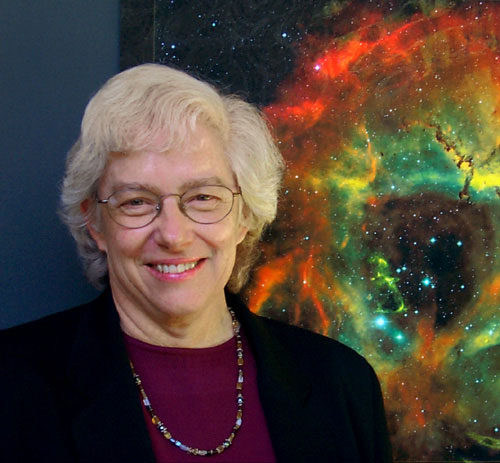 Wabash College will host internationally famous astronomer, Sidney C. Wolff. She will give a talk on "Images of the Universe: From the Big Bang to the Planets" at 8 p.m. Tuesday, September 30, in Salter Hall in the Fine Arts Center.
Wabash College will host internationally famous astronomer, Sidney C. Wolff. She will give a talk on "Images of the Universe: From the Big Bang to the Planets" at 8 p.m. Tuesday, September 30, in Salter Hall in the Fine Arts Center.
Wolff received her B.A. from Carleton College in 1962, and a Ph.D. from the University of California, Berkeley in 1966. She then accepted a position at the Institute for Astronomy at the University of Hawaii. In 1984, she was named director of Kitt Peak National Observatory, becoming the first woman to direct a major U.S. observatory. In 1987 she was appointed director of the National Optical Astronomy Observatories (NOAO). She was elected president of both the Astronomical Society of the Pacific and the American Astronomical Society and serves on the Board of Trustees of her alma mater, Carleton College. After stepping down as director of NOAO in 2001, she launched The Astronomy Education Review, a refereed electronic journal focused on research about effective methods of teaching astronomy and space science. She has published nearly 100 research papers and several books, including introductory college texts.
Wolff played a leadership role in the development of Mauna Kea, now the premier astronomical site in the northern hemisphere, and in several other large telescope projects. Most significantly, she was the first director of the international project that built the two state-of-the-art Gemini telescopes, one in Hawaii and the other in the foothills of the Andes in Chile. Currently, she is president of the LSST Corporation, where she is working on development of a telescope to survey the visible sky every week; the data will constrain models of dark energy and dark matter and will also discover essentially all the asteroids with diameters larger than 200 meters that might impact the earth. Her research is focused on the study of changes in rotation with time in newly formed stars as a clue to the evolution of the disks of gas and dust surrounding young stars—disks in which planet formation takes place.
Her talk is free and open to the public.
Photo: NOAO/AURA/NSF